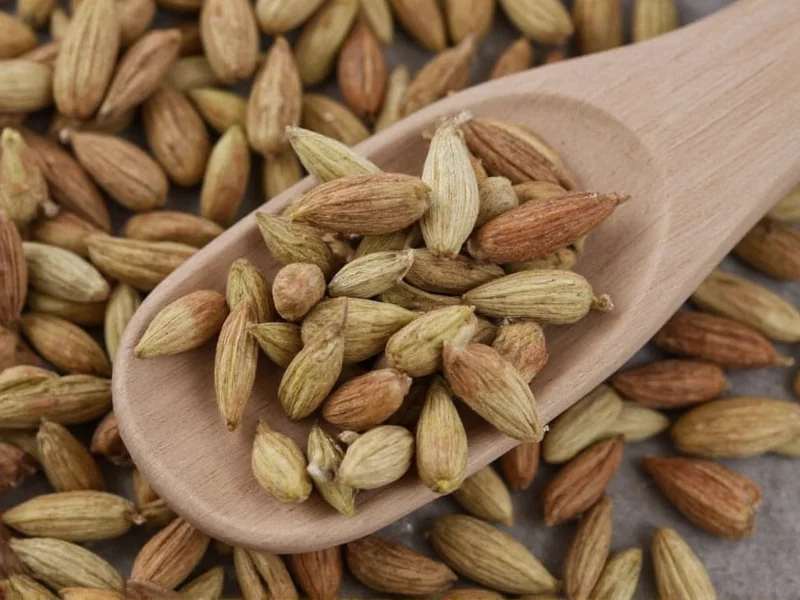Cardamom, often called the “queen of spices,” adds a distinctive floral, citrusy flavor to both sweet and savory dishes. Understanding how to use cardamom pods properly makes all the difference in unlocking their complex aroma without overwhelming your recipe. Unlike pre-ground cardamom, fresh pods offer superior flavor and versatility when handled correctly.
Understanding Cardamom Pod Varieties
Before learning how to crush cardamom pods for cooking, it's essential to recognize the two main types:
- Green cardamom pods (Elettaria cardamomum) - The most common variety with a bright, citrusy flavor. Ideal for both sweet and savory applications.
- Black cardamom pods (Amomum subulatum) - Larger, smokier, and more intense. Best used in savory dishes like curries and stews.
Green cardamom works beautifully in baked goods, chai tea, and Scandinavian pastries, while black cardamom shines in Indian biryanis and meat dishes. Never substitute one for the other in recipes calling for a specific type, as their flavor profiles differ significantly.
Step-by-Step Cardamom Pod Preparation
Proper cardamom pod preparation techniques ensure maximum flavor extraction:
- Inspect pods - Look for plump, green pods with no cracks or discoloration
- Dry roast (optional) - For deeper flavor, toast whole pods in a dry pan for 1-2 minutes until fragrant
- Crack the pod - Use the flat side of a chef's knife to gently crush the pod
- Extract seeds - Pop open the pod to access the tiny black seeds inside
- Grind or use whole - Depending on your recipe requirements
| Preparation Method | Best For | Flavor Release Time |
|---|---|---|
| Whole pods | Slow-cooked dishes, rice, braises | 30-60 minutes |
| Crushed pods | Sauces, stews, broths | 15-25 minutes |
| Ground seeds | Baking, beverages, spice blends | Immediate |
Practical Applications in Cooking
Knowing using whole cardamom pods in recipes versus ground seeds determines your dish's final flavor profile:
Savory Dishes
Add 2-3 whole green cardamom pods to rice cooking water for fragrant basmati rice. In curries and stews, include pods early in the cooking process and remove before serving. For meat marinades, crush pods and mix seeds with other spices for deeper penetration.
Sweet Applications
For best way to use cardamom pods in baking, grind seeds fresh using a spice grinder or mortar and pestle. Cardamom pairs exceptionally well with citrus, chocolate, and stone fruits. Scandinavian baking often uses 6-8 pods (about 1 teaspoon seeds) per loaf of bread.
Beverages
Crush 2-3 pods and add to your coffee grounds before brewing for a subtle cardamom coffee infusion. For traditional Indian chai, include 4-6 pods in the simmering spices.
Cardamom Measurement Guide
Understanding cardamom pod to ground cardamom conversion prevents recipe disasters:
- 1 medium cardamom pod = 8-12 black seeds
- 1 pod = approximately 1/8 teaspoon ground cardamom
- 1 teaspoon cardamom seeds = 8-10 pods
- 1 tablespoon ground cardamom = 24-30 pods
When substituting ground cardamom for pods, use 1/4 teaspoon ground for every 2 pods called for in the recipe. Remember that pre-ground cardamom loses potency quickly, so fresh pods always provide superior flavor.
Storage Methods for Maximum Freshness
Proper cardamom pod storage methods maintain flavor for months:
- Store whole pods in an airtight container away from light and heat
- Keep in a cool, dark cupboard (not the refrigerator, which introduces moisture)
- Whole pods retain freshness for 6-12 months; ground cardamom loses potency in 3-6 months
- For long-term storage, freeze pods in a sealed container for up to 2 years
Test freshness by squeezing a pod—fresh cardamom will release aromatic oils and make a slight cracking sound. Dull, brittle pods have lost their essential oils and should be replaced.
Common Mistakes to Avoid
Even experienced cooks make errors with how to use cardamom pods:
- Overusing - Cardamom's strong flavor can dominate; start with less and adjust
- Adding too late - Whole pods need time to infuse; add early in cooking process
- Using old pods - Stale cardamom lacks flavor complexity
- Grinding pods instead of seeds - The fibrous pod material creates unpleasant texture
- Confusing green and black varieties - They're not interchangeable in most recipes
When in doubt about how many cardamom seeds in one pod, remember that most medium-sized pods contain 8-12 seeds. Count seeds when precision matters for baking recipes.
Traditional Recipes Featuring Cardamom Pods
Explore these authentic applications to master cardamom pod preparation techniques:
- Indian Biryani - Add 5-6 whole green cardamom pods to the rice cooking liquid
- Swedish Cardamom Buns - Use 10 freshly ground pods (about 1.5 tsp seeds) per batch
- Arabic Coffee - Crush 3 pods per cup along with saffron and serve unfiltered
- Cardamom-Infused Syrup - Simmer 15 pods in simple syrup for desserts and cocktails
For Middle Eastern rice dishes, the traditional technique involves lightly crushing pods with a mortar and pestle before adding to the cooking liquid—this releases more flavor than using intact pods.











 浙公网安备
33010002000092号
浙公网安备
33010002000092号 浙B2-20120091-4
浙B2-20120091-4